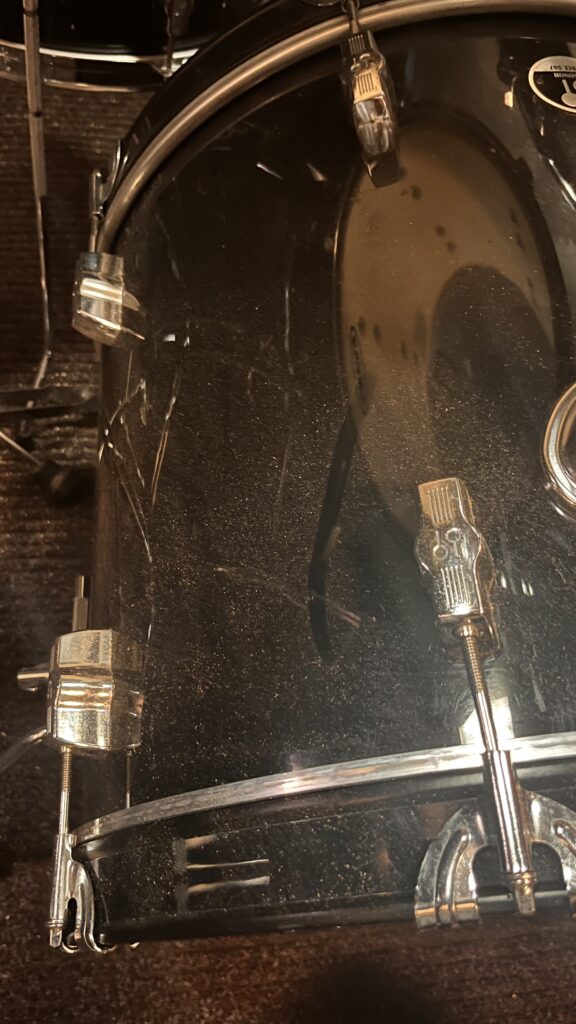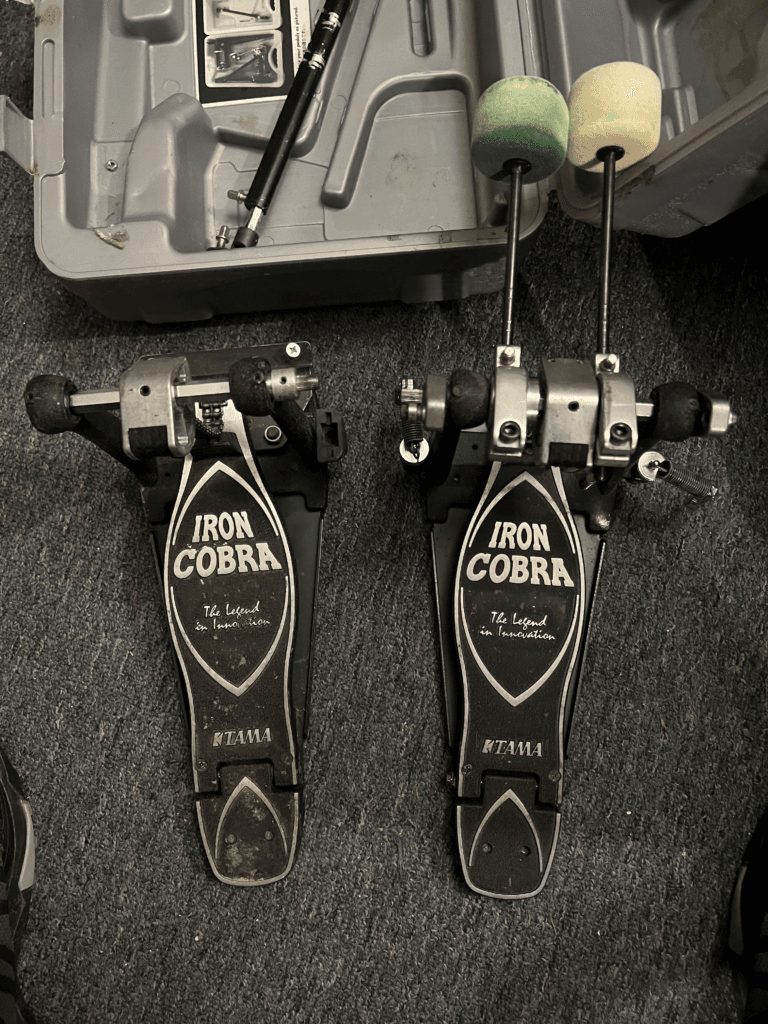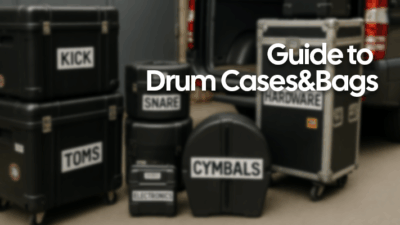Proper drum kit maintenance is key to preserving the quality and longevity of your gear.
Whether you’re a beginner or a seasoned drummer, taking care of your drum kit is the duty of every drummer. It helps us sound good and preserve our gear.
In this article, we’ll cover essential tips for maintaining your drum kit to help you keep your drums in peak condition.
Clean your drums regularly
Keeping your drums in top shape is all about regular cleaning.
A simple daily wipe with a soft, damp cloth can work wonders, getting rid of dust, sweat, and grime that build up after each practice or gig.
For a more thorough clean every few months, grab some mild soap and water to tackle those stubborn spots.
Just steer clear of harsh chemicals – they can really mess up your drum’s surface!

Inspect and maintain tension rods
Honestly, tension rods are key to your drum kit’s upkeep. They control how tight your drumheads are, which directly impacts tuning and sound.
It’s a good idea to check the tension rods weekly to make sure they’re evenly tightened across the drumhead.
Personally, I do little tuning tweaks every session – it helps to have great sound, also I get aware if any tension rod is getting rusty.
If they’re not, it can put unnecessary stress on the drumhead, leading to tuning problems or even damage.

If you spot any stripped threads or damaged rods, don’t wait, just replace them right away to prevent any hardware issues.
A tiny drop of oil on the threads can help keep things running smoothly and stop rust from forming.
Replace drumheads proactively
Over time, drumheads do wear out, which can really affect your sound.
Look out for signs like dents, stretched areas, or a dull tone. Don’t wait until the drumhead tears apart!
To keep your sound crisp, aim to replace your drumheads every 6 to 12 months, depending on how often you play.

When you do swap them out, use a drum key to make sure the tension is even across the head.
Just be careful not to over-tighten, as that can lead to uneven stretching or even breakage.
I have broken atleast three snare reso heads just by over-tightening it…
Lubricate moving hardware
When it comes to your drum kit hardware like pedals, stands, and mounts, keeping those moving parts well lubricated is key.
A silicone-based lubricant works wonders on hinges and joints, helping to eliminate any annoying squeaks and ensuring everything operates smoothly.
Just be cautious not to go overboard with the lubricant; too much can create a sticky residue that attracts dust and grime.
Besides lubrication, it’s a good idea to check your metal parts for any signs of rust or corrosion.
If you spot any trouble areas, grab some wire wool or a specialized cleaning tool to clean them up and get them back in shape.

Protect drum shells from bad environment
Your drum shells can really take a hit from environmental factors.
Things like humidity, temperature swings, and direct sunlight can cause the wood to warp or crack.
When you’re putting your drums away, consider using breathable covers to protect them from dust, smoke, or extreme temperatures.
And, obviosly stay away of direct sunlight, as it can damage the finish and lead to discoloration over time.
Clean your cymbals
This might be controversial, but hear me out. Drum kit maintenance is not just about the shells – cymbals are another crucial part of your drum kit that needs some TLC.
Some people prefer to have this natural residue and “patina” on the cymbals, but over time it does affect cymbals in a negative way.
To clean them up, you can use lemon juice, vinegar solution or specialized cymbal cleaners to tackle oxidation.
If you decide to use specialized cymbal cleaners – make sure to use the same brand you cymbals are.
For example, if you play Zildjian, make sure you use Zildjian cymbal brand polisher.
Just make sure to avoid any abrasive materials that might scratch the surface of your cymbals.

Make it a habit to regularly check your cymbals for cracks that could be caused by improper playing techniques or just general wear and tear.
Cracks can really mess with the sound and structural integrity of the cymbal, so don’t hesitate to replace any that show significant damage – just cut it out.
Deep clean hardware and lugs
To keep your hardware in prime condition, it’s essential to give those hard-to-reach parts a good deep clean: lugs, hoops, and tension rods.
Start by taking apart your kit’s hardware so you can clean each piece thoroughly.
For the metal parts, mild chrome cleaners or polish work wonders, but don’t forget to test the cleaner on a small, hidden spot first to make sure it won’t harm the finish.
As you disassemble, organize those small parts to avoid losing anything. Keeping everything sorted will make reassembly a breeze.
This will help you to keep up with tidy drum kit maintenance.
Maintain drum pedals

A well-cared-for drum pedal is key to smooth and responsive playing.
Make sure to lubricate the hinges and springs to get rid of any squeaks and ensure everything moves fluidly.
Adjust the tension to match your playing style, but watch out for excessive resistance, as that can lead to fatigue during long sessions.
If lubrication doesn’t fix any issues, take a look at the springs or bearings for wear and replace them if needed to keep your pedal in top shape.
Use bags and cases for transport
When it comes to transporting your drum kit, careful handling is a must to prevent damage.
Use padded, hard-shell cases or soft bags with foam inserts to shield your drums from dents and scratches. I personally use AAA rigid cases from Protection Racket.
When packing, avoid stacking your drums on top of each other, as that can create unnecessary pressure and harm the shells.
Make sure to secure your hardware, like pedals and stands, separately.
This will help prevent them from scratching or damaging your drum shells while you’re on the move.
In conclusion
By following these drum kit maintenance tips, you can make sure your drums sound their best and last for years to come.
Most important – regular cleaning. Also, proper care of hardware, and proactive replacements will keep your kit in top shape, so you can focus on playing with confidence.



